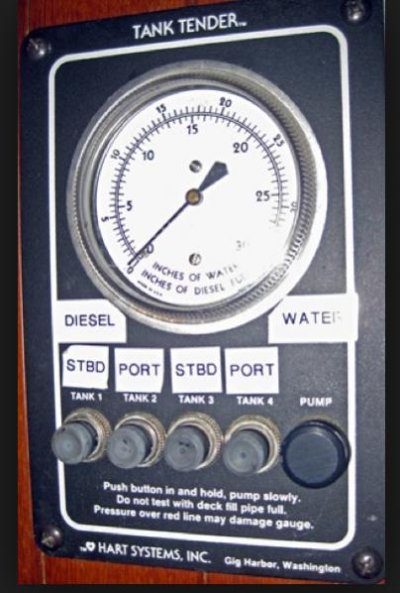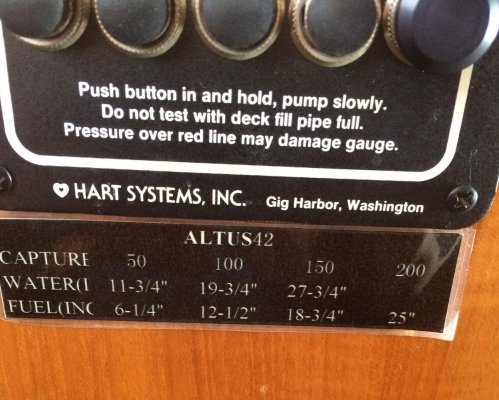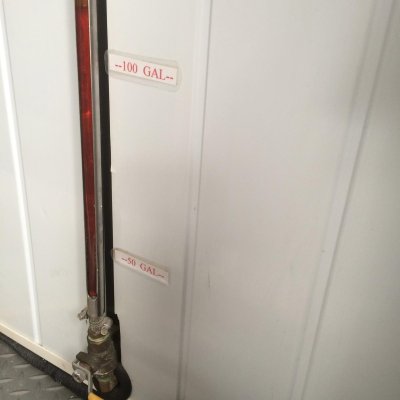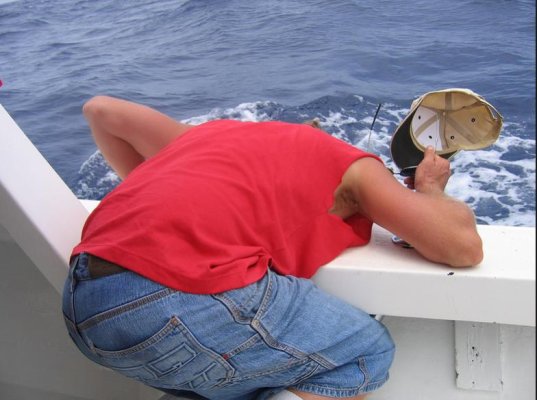You are using an out of date browser. It may not display this or other websites correctly.
You should upgrade or use an alternative browser.
You should upgrade or use an alternative browser.
Fuel Gauges
- Thread starter raymond.goff
- Start date
The friendliest place on the web for anyone who enjoys boating.
If you have answers, please help by responding to the unanswered posts.
If you have answers, please help by responding to the unanswered posts.
HopCar
Guru
- Joined
- Aug 20, 2011
- Messages
- 5,308
- Vessel Name
- Possum
- Vessel Make
- Ellis 28
They do make several versions. The one I stock will work in most petroleum products, gasoline, diesel, kerosene etc. I don't know how well it will work in high alcohol content gasoline.
tallswede
Senior Member
I've been using bamboo dipsticks that are kinda flexible to make it through some S-curves in my fill lines. I have them cut to a manageable length but they are still kinda long making them a pita to store so I may try a tape. I do use two different sticks for water and fuel, I would do the same for tapes.
Kevin
Kevin
Codger2
Guru
- Joined
- Oct 11, 2007
- Messages
- 6,691
- Location
- US
- Vessel Name
- Circuit Breaker
- Vessel Make
- 2021..22' Duffy Cuddy cabin
I fully realize that I am posting this opinion at my own peril but why would you want a system for determining your existing fuel level that requires you to go outside the boat? Sure, sight gauges are really nice and I have them but they require you to go (in most cases) into the ER. Mine are located through the lazarette hatch but still a pain to check when you are underway.
Tank Tenders are easy to install and can reside in almost any location that is above the tops of the fuel tanks. No electricity is required and they are powered by Mother Nature. (Barometric Pressure)
The outside dial reads inches of diesel while the inside dial reads inches of water. On my boat The Tank Tender agrees 100% with the markings on the sight gauges. (I only use the sight gauges to confirm that the Tank Tender is working properly. (ie: no leaks, breaks in the tubing, etc.)
Right below the Tank Tender is a label that indicates how many inches of fuel or water are in the tank & those readings are converted into gallons.
Super simple and no power is required.
Tank Tenders are easy to install and can reside in almost any location that is above the tops of the fuel tanks. No electricity is required and they are powered by Mother Nature. (Barometric Pressure)
The outside dial reads inches of diesel while the inside dial reads inches of water. On my boat The Tank Tender agrees 100% with the markings on the sight gauges. (I only use the sight gauges to confirm that the Tank Tender is working properly. (ie: no leaks, breaks in the tubing, etc.)
Right below the Tank Tender is a label that indicates how many inches of fuel or water are in the tank & those readings are converted into gallons.
Super simple and no power is required.

Attachments
Last edited:
I think it's a matter of cost and complexity vs. need.
Besides, you cannot get a good reading while underway in most situations because the fuel is moving in the tanks.
If I take a dipstick measurement in the morning and have 40 gallons (combined), I can estimate 20 hours of running 7 knots. Of course I wouldn't try that, I would leave a certain amount in reserve and also know that there is a certain amount that's below the pickup tubes.
Having a better estimate of fuel onboard could cut down unnecessary fuels stops. I'm willing to pay $5 for a dipstick but not $500 for a sophisticated gauge.
Besides, you cannot get a good reading while underway in most situations because the fuel is moving in the tanks.
If I take a dipstick measurement in the morning and have 40 gallons (combined), I can estimate 20 hours of running 7 knots. Of course I wouldn't try that, I would leave a certain amount in reserve and also know that there is a certain amount that's below the pickup tubes.
Having a better estimate of fuel onboard could cut down unnecessary fuels stops. I'm willing to pay $5 for a dipstick but not $500 for a sophisticated gauge.
markpierce
Master and Commander
- Joined
- Sep 25, 2010
- Messages
- 12,557
- Location
- USA
- Vessel Name
- Carquinez Coot
- Vessel Make
- penultimate Seahorse Marine Coot hull #6
I certainly wouldn't want to "dip-stick" my tanks while underway. Takes attention away from operating the helm, and could allow water that might be flowing on the deck to enter the tanks. TankTender works well and only takes several seconds to check the status of a tank. Dip-sticking would take at least three minutes per tank, and with a painful crouch.
If dip stick method is used: Check fuel level before getting underway. Then know approximate gph used by engine at speeds. No need to check fuel level till next morning... that is, if your calculations were correct. lol
Similar threads
- Replies
- 17
- Views
- 780
- Replies
- 4
- Views
- 525
- Replies
- 6
- Views
- 488
- Replies
- 39
- Views
- 3K




